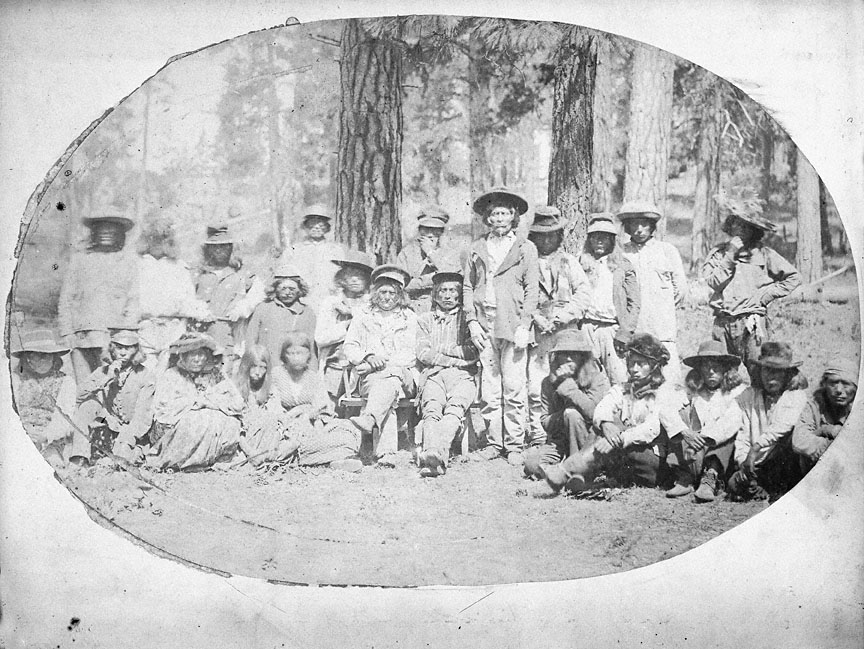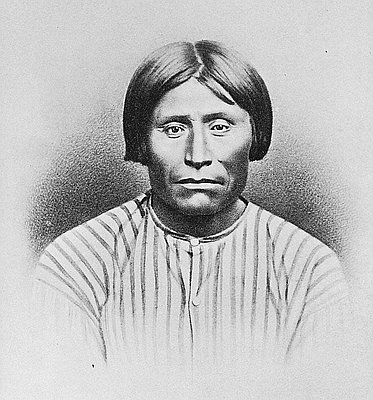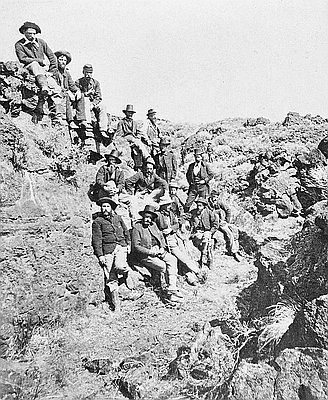U.S. Army Lt. Lorenzo Lorain took this photograph of a group of Klamath and Modoc Indians in the summer or fall of 1860.
The traditional territory of the Klamath and Modoc once encompassed the entire Klamath Basin. The Klamath inhabited the northern portion from Klamath Marsh south to present-day Klamath Falls. The Modoc lived in the area from Lost River south to Mount Shasta. In the early contact period, the two groups continued to follow their seasonal subsistence round, which drew on the various ecological zones of the Klamath Basin. While the Klamath were more dependent on local fisheries, the Modoc placed greater emphasis on large game hunting. The harvesting of local plants, roots, and seeds, together with a reliance on waterfowl, complemented the groups’ traditional diet. Given the Natives’ extensive use of the various natural resources within their territory, they came into conflict with Euro American settlers who wished to take control of the land and resources of the Klamath Basin in the mid-nineteenth century. The basin was especially attractive to pioneers seeking fertile grazing areas.
Under increasing pressure from Euro American settlement, the Klamath and Modoc signed the Klamath Lake Treaty of 1864. This treaty reserved lands in the Upper Klamath and Agency lakes areas, as well as the Williamson and Sprague drainages, for both the Klamath and the Modoc. During the 1860s, tensions developed on the reservation between the Klamath and Modoc, and in the late 1860s, a group of Modoc led by Kintpuash (Captain Jack) returned to their homes on the Lost River, located south of the Oregon-California border. Unfortunately, American settlers continued to move into the ceded lands of the Modoc and conflicts arose. Both local and federal officials pressured Kintpuash and his group to return to the Klamath Reservation. When he resisted, they called on the U.S. Army to force the Modoc back on the reservation. This crisis precipitated the Modoc War of 1872-73, which began in late November 1872 when a U.S. cavalry unit dispatched to the region attacked Kintpuash’s village. Although Kintpuash led a daring six-month defensive campaign against superior numbers, he and his followers were eventually forced to surrender. Kintpuash and three other leaders were hanged for their role in the killing of three peace commissioners. In October 1873, the 155 surviving members of Kintpuash’s group were deported to Indian Territory. (Oklahoma). Some of these survivors were allowed to return to the Klamath Reservation after 1900.
Further Reading:
Stern, Theodore. “Klamath and Modoc.” In Handbook of North American Indians. Vol. 12. Plateau. Edited by Deward E. Walker. Washington D.C., 1998, 446-465.
Murray, Keith. The Modocs and Their War. Norman, Okla., 1959.
Stern, Theodore. The Klamath Tribe: A People and Their Reservation. Seattle, Wash., 1965.
Written by Melinda Jette, © Oregon Historical Society, 2003.


